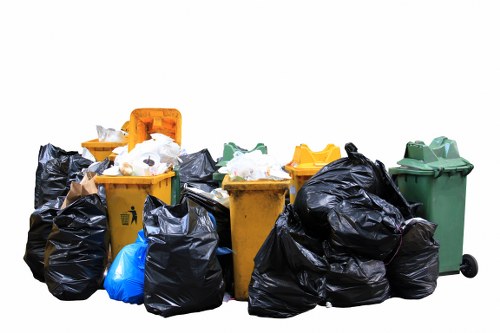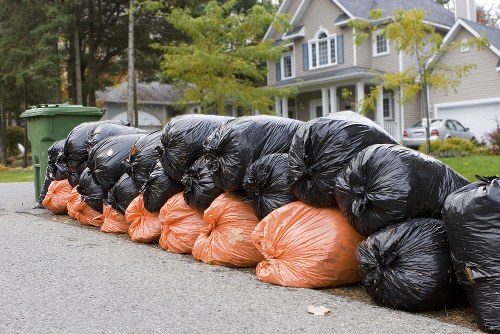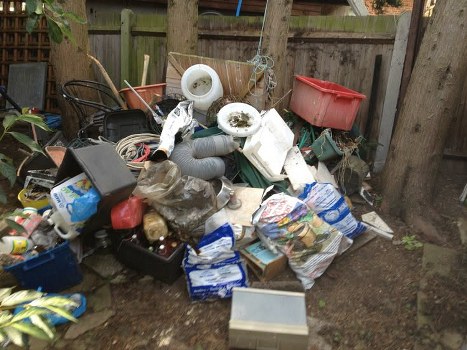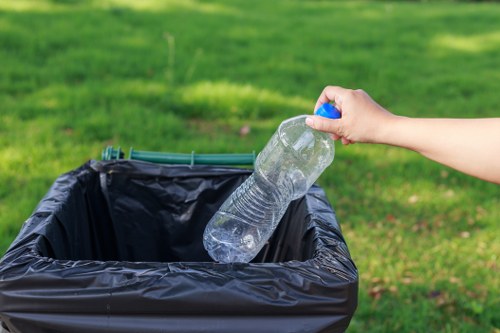Rubbish Collection in Rubbish Clearances: An In-depth Approach to Efficient Waste Management
Introduction to Rubbish Collection in Rubbish Clearances

Rubbish collection plays a pivotal role in maintaining clean cities and sustainable environments. In modern urban areas, efficient rubbish clearances are critical not only for hygiene but also for preserving ecological balance. In this article, we explore how organized waste management services, coupled with advanced technological integration, can revolutionize rubbish collection processes. The focus remains on ensuring that waste is managed with care and professionalism.
The diverse challenges faced in rubbish collection demand that municipalities and service providers collaborate effectively. This article outlines the evolution of waste management, the importance of proper infrastructure, and the various techniques that have emerged in recent years. Innovative sorting and recycling technology now play a key role, further facilitating sustainable clearances. By integrating traditional methods with state-of-the-art machinery, the sector keeps evolving. Whether it is collecting household waste or managing commercial clearances, every step is meticulously planned and executed. The growing awareness of climate change has pushed many industries to prioritize eco-friendly practices, resulting in an improved framework for rubbish collection processes across communities.
Furthermore, the management of waste has reached a stage where strategic planning is a norm. Local governments and private companies are cooperating to ensure that operations are smooth and efficient. This synergy benefits not only the environment but also the local economy by creating job opportunities. As urban populations rise and waste production increases, it is paramount that service providers adapt and innovate. In this dynamic field, comprehensive rubbish clearances have become synonymous with community progress and environmental care. The introduction of automated systems and digital scheduling has streamlined operations further, ensuring minimal disruption and maximum safety for all stakeholders.
Understanding the Process and Key Benefits

The process of rubbish collection involves several steps that ensure safety and efficiency. Initially, waste is sorted at designated collection points, ensuring that items suitable for recycling do not end up in landfills. The modern approach to rubbish clearances puts a premium on meticulous planning and execution. With the integration of GPS tracking and efficient routing systems, service providers can optimize their operations to reduce carbon emissions. The adoption of these strategies signifies a major leap forward in urban waste management, ultimately benefitting both communities and the environment. In addition, the emphasis on customer-centric service in rubbish collection leads to high satisfaction rates and long-term sustainability.
Key benefits of a well-organized rubbish collection system include reduced pollution levels and improved public health standards. Local governments have started to realize that consistent waste management has a direct impact on the overall quality of life. By ensuring that rubbish is collected and disposed of properly, cities can minimize the spread of harmful pollutants and infections. This method not only protects the environment but also fosters a sense of community responsibility. Moreover, as recycling practices grow, so does the potential for reusing materials, which could in turn reduce the need for raw resource extraction. Such cycle-conscious initiatives underscore the importance of a structured approach to rubbish clearances.
Integrating technology with service delivery is another significant advantage for modern waste management systems. Digital platforms now allow residents and businesses to schedule collection times, report missed pickups, and gain insights into recycling efforts. Tools such as mobile apps and online portals make it easier for communities to interact with service providers, leading to enhanced transparency and efficiency. The digitization of traditional methods has introduced higher levels of accountability and has streamlined many operations previously managed manually. Through these advancements, the future of rubbish collection appears both promising and resilient against growing urban challenges.
Best Practices for Effective Rubbish Clearances

Adopting best practices in rubbish collection involves a blend of industry expertise, technological integration, and sustainable methodologies. Service providers are increasingly turning to comprehensive planning that includes route optimization, efficient sorting, and scheduled clearances to maximize their operational output. One key aspect is systematic segregation: ensuring that recyclable, hazardous, and general waste are separately collected and processed. This strategy is crucial for minimizing environmental impacts and enhancing the overall clarity of waste streams. Additionally, effective training programs for workers bolster safety protocols, further emphasizing the company’s commitment to professionalism and community service.
The detailed steps often involve the usage of state-of-the-art equipment combined with traditional manual checking to ensure accuracy in sorting. By implementing a series of checks and balances, businesses can eliminate the risk of contamination and inefficiency in the process. Innovative strategies include using automated sensors for detecting hazardous materials during collection and leveraging data analytics to forecast areas of high waste generation. These methods not only ensure efficient rubbish clearances but also strengthen the entire waste management system. Moreover, public awareness campaigns and educational initiatives continue to contribute towards community participation in sustainable practices.
The implementation of standardized procedures across various service providers elevates the overall quality and sustainability of the operations. Best practices include the regular maintenance of collection vehicles, proper disposal of bulky items, and the incorporation of advanced health and safety measures to protect both workers and the community. Organizations also consider seasonal variations and adapt their schedules to meet fluctuating demands, resulting in a resilient system capable of managing emergencies and routine operations alike. A step-by-step approach to improved rubbish collection through diversification and innovation sets an industry benchmark that paves the way for future advancements in waste management services.
Environmental Impact and Safety Measures

The environmental impact of effective rubbish collection cannot be overstated. Recycling and proper waste treatment facilities help to reduce landfill expansion and lower greenhouse gas emissions. A thorough rubbish clearances system, supported by rigorous safety measures, plays a crucial role in conserving resources and protecting natural habitats. Environmental policies are increasingly steering waste management companies toward eco-friendly practices. These range from using energy-efficient vehicles to employing sustainable methods of waste disposal and processing. The focus is on creating a circular economy where waste materials are reintegrated into production cycles, reducing the demand for virgin materials. Such initiatives underscore the commitment of service providers to safeguard our planet for future generations.
Safety measures in rubbish collection include comprehensive training for handling hazardous waste and establishing strict protocols for waste segregation at source. The process also involves regular reviews of operational strategies to avoid accidents and reduce exposure to dangerous substances. Using innovative technology, such as real-time monitoring systems, businesses can detect any potential mishaps early and take corrective action. Worker safety is a top priority, and companies are well-aware that a secure environment leads to higher productivity and improved public trust. Additionally, these rigorous safety protocols extend to containment and transportation, ensuring that no harmful substances leak into the ecosystem.
Supporting environmental protection through efficient clearances is a collective endeavor. Local authorities and private organizations often collaborate on campaigns aimed at reducing waste overall and promoting eco-friendly behavior. Lists of best practices, such as the following, are often circulated:
- Schedule timely collection and disposal services.
- Implement effective segregation techniques at the source.
- Adopt innovative recycling methods and promote resource recovery initiatives.
- Regularly train personnel on safety and handling of hazardous materials.
Future Trends and How to Optimize Your Service

Looking forward, the future of rubbish collection in clearances is set to be driven by innovation and smart technologies. Emerging trends indicate that data analytics, artificial intelligence, and machine learning will further streamline the waste management process. These innovations help in planning optimal routes, predicting peak waste periods, and improving the overall efficiency of collection services. Companies that invest in technology and sustainable practices are more likely to succeed by reducing costs and minimizing their environmental impact. Furthermore, the collaboration between tech firms and waste management companies promises a future where operations become seamless and incredibly adaptive to urban demands.
Business leaders and environmental experts predict that waste management will soon integrate more with smart city frameworks. Rubbish clearances can benefit from sensors embedded in bins that report fill levels in real time, ensuring prompt collection and minimal overflow. Innovations such as automated recycling centers and robotic sorting machines are already making waves in the industry. These advancements represent the dawning of a new era in waste management where efficiency meets sustainability. With growth in urban populations and the complexity of waste streams, the adaptations in the service delivery models are not just welcome but essential. Owners and managers are encouraged to invest in these smart solutions to remain competitive in the evolving landscape.
For those considering upgrading their current waste management solutions, several practical steps can be taken to optimize services in rubbish collection and clearances. Here are a few recommendations to ensure that your service remains top-notch:
- Conduct Regular Audits: Review your existing waste management frameworks to identify improvement areas.
- Invest in Training: Equip your team with the latest knowledge and skills in handling and processing waste safely.
- Adopt Sustainable Practices: Transition toward energy efficient vehicles and eco-friendly waste processing technologies.
- Engage Your Community: Foster partnerships with local bodies and residents to encourage responsible waste disposal.